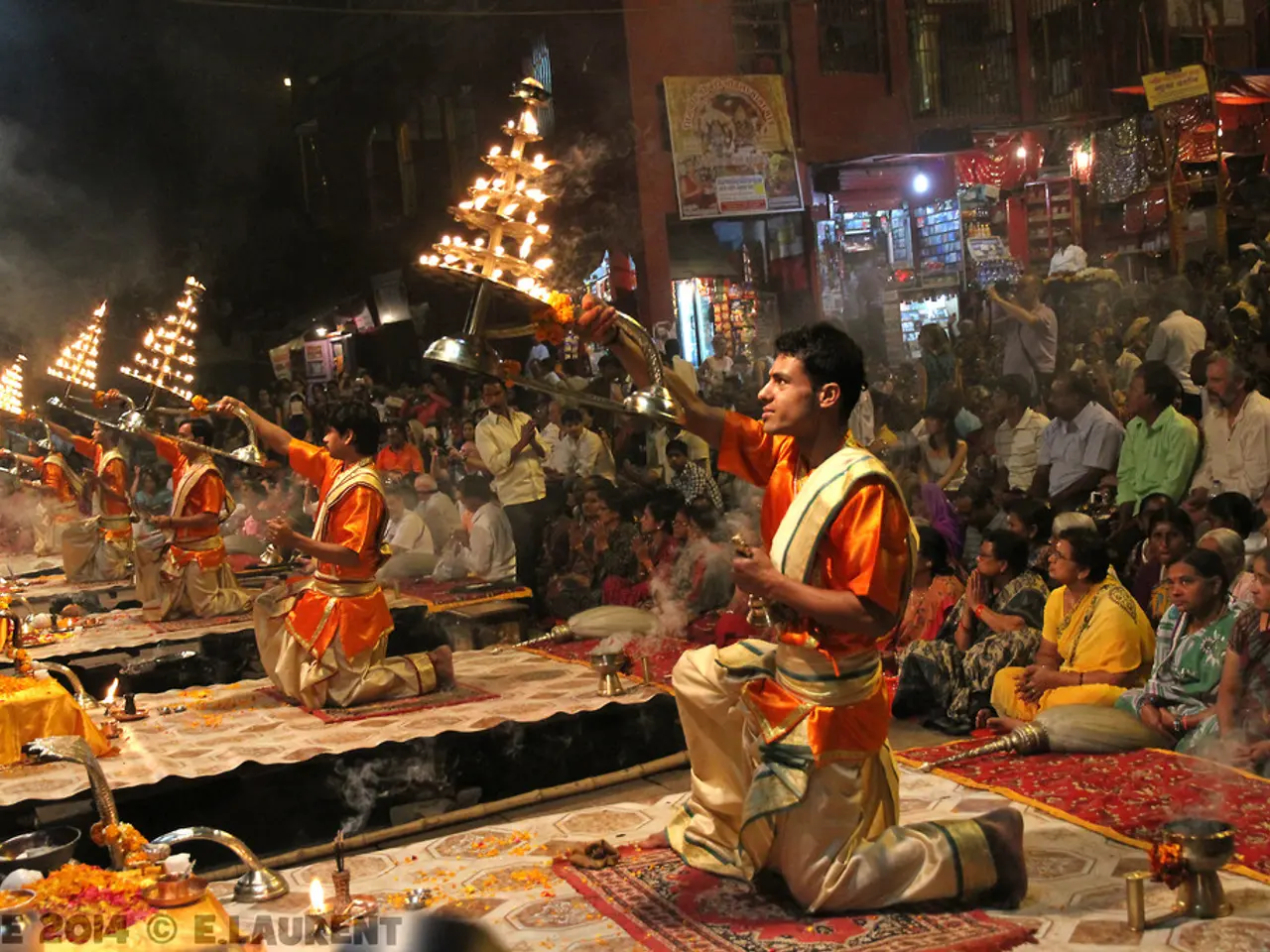The Evolution of Cultural Signatures Through Time-Honored Attire
In the ever-evolving world of fashion, traditional clothing is making a significant comeback, serving as a powerful symbol of cultural pride and sustainability. Global influences and cross-cultural exchanges are leading to unique fashion developments that honor original designs while integrating elements from different cultures.
The resurgence of interest in traditional clothing is driven by a desire to connect with cultural roots and embrace sustainable fashion practices. Exploring, preserving, and adapting traditional clothing allows us to honor our histories and the tapestry of identities that make up the vast cultural mosaic of our global society.
Traditional garments serve as an expression of cultural heritage and identity. For example, in Latin culture, clothing like the traje de la sierra is more than attire; it symbolizes cultural pride, continuity, and resistance, connecting wearers to their roots and communicating their cultural narrative globally, especially during ceremonies like the Day of the Dead.
Many traditional clothes incorporate motifs and colors representing spiritual beliefs or cosmological symbols. Latin American indigenous textiles may feature animals, plants, saints, or mythological figures that tell stories or invoke spiritual protection. In Hinduism, white garments symbolize purity, spiritual readiness, and devotion, used during worship and rituals to reflect adherence to spiritual principles.
Clothing often indicates social hierarchy or community roles. In Peru, traditional textiles symbolized social status and cultural identity among pre-Inca and Inca civilizations. Regional varieties exhibited unique styles signifying the wearer’s origin and position within society, blending indigenous and colonial influences over time.
Some garments also have practical origins related to the environment and social function. For instance, loose trousers in the Middle East such as chalwar or salwar originated in Persia and were designed for ease of movement and protection while working, later adopted culturally and militarily across regions. Covering garments and veils also reflected ancient customs related to modesty, predating religious prescriptions.
Traditional attire often plays a key role in festivals, rites of passage, and communal events, reinforcing shared heritage and social bonds. Specific colors and patterns chosen for events like celebrations of ancestors invoke themes like life, death, and remembrance, strengthening communal ties.
In the modern fashion landscape, traditional clothing is finding new life as contemporary designers incorporate traditional patterns and techniques from various cultures into modern fashion. Educational institutions and cultural organizations are promoting traditional textiles and craft skills through workshops, exhibitions, and educational programs.
Intergenerational transmission of traditional clothing involves passing down knowledge, techniques, and stories, which fortify familial and cultural bonds. Younger generations are adapting traditional clothing to reflect their current identities through modern cuts and contemporary accessories.
The appeal of traditional clothing extends beyond fashion, as many young people are inspired by their cultural heritage as a source of sustainability in the fashion industry, choosing garments crafted using traditional methods and natural materials. Traditional clothing speaks a universal language of identity, fostering pride, unity, and belonging, transcending borders and connecting people worldwide through shared human experiences of heritage and lineage.
From African prints on international runways to Eastern European embroidery techniques in contemporary Western wear, traditional clothing is influencing global fashion directions, bridging cultural gaps and fostering a greater appreciation for the rich tapestry of human history and diversity.
- As cultural travel becomes more popular, people are attending exhibitions showcasing traditional clothing from around the world, learning about the heritage and stories behind each piece.
- Multiple fashion-and-beauty brands are collaborating with artisans to recreate iconic traditional garments, giving a modern twist to age-old cultural events.
- By embracing the rich fashion history within their family, individuals are cultivating a unique lifestyle that incorporates their heritage and traditions into their daily attire.
- In several societies, traditional clothing serves as a tangible connection to centuries-old customs and values during travel and cultural events, enhancing the shared experiences and fostering a sense of pride among participants.





